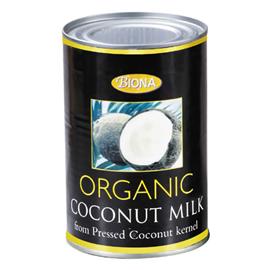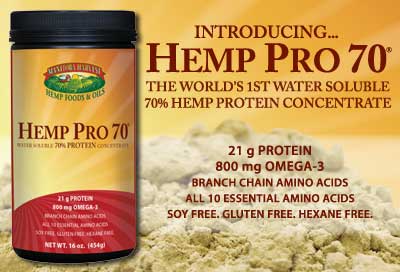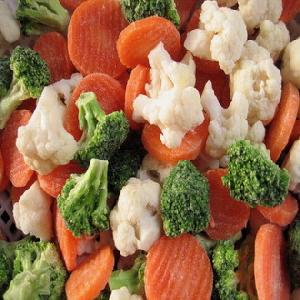Filed under: General Health, Nutrition, Recipes
Recently a few CP clients have been experimenting with the new Warp Speed Fat Loss protocol. I of course have been helping them with the dietary portion, and with one client in particular completely creating my own version of the diet for her, to better suit her needs.
Looking over the new protocol is always fun because Mike Roussell always comes up with some simple, convenient and tasty recipes that nicely fit a lower-carb diet. Mike did not disappoint (he was also the inspiration for my pumpkin pie smoothie). Here is a new, smooth and incredibly easy recipe Mike put together, lightly modified by me (I can’t help myself, I put my modifications and optional add-ons in the gray font, depending on needs/desires/calories).

Smooth Strawberry Dream
- 1 cup plain 2% Greek yogurt (he wanted non-fat, but I prefer the 2%)
- 1 cup fresh or frozen strawberries
- 3 tbsp organic coconut milk
- 1-2 tbsp chia seeds (works better than flax here, more neutral taste)
- 1 scoop vanilla or strawberry protein powder
- 1 packet Truvia if desired
- ice cubes
Here are the Nutrition Facts for the Smoothie in its original form: Calories 335 Fat 16.5 grams Carbs 22.5 grams Fiber 4 grams Protein 24 grams.
For my modified version with the protein and chia seeds: Calories 524 Fat 22 grams Carbs 34.5 grams Fiber 10 grams Protein 47 grams.

You can modify the original as needed or desired. Maybe you just want to bump protein up, so you just add in 1/2 scoop of protein, which also provides a nice flavor boost. Maybe you just want to add a packet of Truvia to the original to sweeten it up a little. Whatever the case may be, this smoothie gives you a delicious and nutritious starting point, that can be taken in a number of directions to meet your goals and desires. Enjoy!
Filed under: General Health, Nutrition
My good friend Cassandra Forsythe has blogged quite a bit recently about the greatness of hemp. For those of you new to this wondrous food, it has many fascinating properties. Obviously we know about some illegal ones, but I am certainly not talking about that today. It is one of the earliest domesticated plant and it is environmentally friendly due to the fact that it “requires” little pesticides and no herbicides.

It is a tremendously versatile little plant that contains all the essential amino acids and fatty acids, which is quite a remarkable combination. It has a perfect 4:1 ratio of omega-6 to omega-3 polyunsaturated fats, while also being a solid source of the very beneficial and anti-inflammatory omega-6 GLA. Omega-6 fats tend to get a bad rap because they are pro-inflammatory, but what people fail to realize is that inflammation is necessary to a degree. It is an essential component to the healing process, and while it needs to be kept in check, it should not be utterly eliminated. To read more about omega-6′s and GLA, I wrote about it HERE.
Hemp’s fatty acid combination is fascinating, as it contains not only GLA, but it is also a good source of the omega-3 ALA (like in flax, chia, walnuts) and is a source of an omega-3 fat that is garnering some attention (SDA, or stearidonic acic). SDA is interesting for it converts to the better known EPA (one of the omega-3′s in fish). ALA also converts, but poorly. When consumed in high amounts (like from flax oil, which I don’t recommend, eat the seeds) it can accumulate in blood lipids, which is problematic. SDA also converts to EPA, though at a better conversion rate, and does not accumulate in blood lipids. This is amazing, since it boosts the important EPA levels without having to consume as much fish oil, without causing any other problems.
Hemp is also rich in vitamin E, carotenes, chlorophyll, phosphorus, magnesium, and zinc while also being gluten-free.
For the protein side of things, hemp is a pretty solid choice, especially for those of you who can’t do whey. It is better than soy since it contains more cysteine (which boosts immunity) and other essential amino acids. It contains all the essential amino acids, is hypo-allergenic, and highly absorbed. Hemp is also a tremendous source of fiber, which is never a bad thing.

Manitoba Harvest is a great company out of Canada that produces top-notch hemp products that are certified organic, and sustainable. They make the incredible Hemp Pro 70, a hemp protein that is 70% protein, which is very high for a plant-based source, as well as hemp butter, oil, milk and a lot more. I encourage you to check them out.
Filed under: General Health, Nutrition
Sorry for the lack of writing lately, between the New Year, going back and forth from Maine and Connecticut, and the fact that I didn’t have any internet at my apartment for the last few days has really set me behind.
As most of you probably know, since I just wrote about it, I have become less and less of a fan of conventional dairy. I think that if we were able to consume dairy as it was made and consumed for thousands of years before industrialization, it wouldn’t be a problem at all. Fortunately for us, I wanted to point out one such product that is made just this way.

Several months ago I came across a butter at Whole Foods that really intrigued me. It was called Pasture Butter by Organic Valley. Organic Valley got great remarks on the Cornucopia Institute’s reviews of dairies, which you can check out here. This basically means that they treat their cows well, do not use antibiotics or growth hormones, and allow them to pasture on real grass.
This butter, due to the fact that it is only made from May to September when grass is at its most nutritious, is high in all the fat soluble vitamins, is delicious, and contains quality saturated fats.
To find an incredibly thorough review (though I disagree with their fat comments) on this product, check out this post on Mother Earth News.
Also do not forget, if you are interested, check out the Lean Eating Program on Precision Nutrition, pre-sale started yesterday, so don’t waste any time! Men click HERE, women click HERE.
Filed under: General Health, Nutrition, Weight Loss
My epic blog post a few days ago (The Case Against Conventional Dairy) has generated a lot of talk and questions. It was by far my longest and most in depth blog to date, and so in covering all that ground it obviously left some people wanting more answers! I will do my best to provide a few here today, to continue to clear up any remaining or lingering questions.
Q: I rememeber reading about dangers of milk pasterisation(sp). So maybe this “casein-cancer connection” actually is “heat-treated casein-cancer connection”.

A: While I am no fan of pasteurization as it destroys the beneficial bacteria in raw milk which actually make it more digestible for people with mild lactose intolerance, it destroys the taste of the milk (ever had a glass of raw milk?, much sweeter and creamier) as well as causing large increases in 7-keto cholesterol content, which is a dangerous oxidized cholesterol, I do not think it is the cause of the casein-cancer connection. Wow that was a long sentence. Yogurt is pasteurized and it’s casein content is not linked to the issue, so I don’t think that is the problem. Now might the pasteurization process denature some of the casein and make it worse? That is within the realm of possibility, but as of right now I would definitely not state that pasteurization is what causes the connection.
You have to keep in mind that cows milk is much higher in protein, in particular casein, than human milk. Human milk is much higher in whey. Back home in Maine I found unpasteurized Greek yogurt at a local natural foods store near my parents home. Talk about jackpot!
Q: Do you think a acid/base balanced diet is a possible reason why diseases associated with a lack of calcium are not prevalent where cow’s milk is a neglible part of the diet?
A: To be totally honest I am unsure how I feel about acid/base balance. The kidneys are actually quite good at keeping things on an even keel. While it is true that the average American eats a highly acidic diet, I just don’t know if it is enough by itself to cause the increased fractures risk. It could certainly be a contributing factor, and obviously eating more alkaline foods (like fruits and vegetables, especially spinach) and less acidic ones (refined carbohydrates, sugary foods, fried foods) is just a great thing for health overall, as well as acid/base balance. So it is definitely possible that the data is skewed because nations like the US who consume more cow’s milk, and therefore calcium, and have more fractures also have more access to and consume more crappy acidic foods.
The way I look at it is you should be eating as many basic foods as possible, and minimizing acidic foods for overall health anyway, and acid/base balance will be improved as a nice little side effect. If you top it off with a little Greek yogurt consumption you get a nice dose of protein, immune and digestive boosting probiotics, as well as a nice dose of calcium without contributing highly to the acid side of things.
Q: Hey Brian, Just curious, if you could gain access to raw milk, would this change?

A: Maybe. While I do think raw milk is a HUGE step up over conventional store-bought milk, even the organic kind, I would still want to know a few things. How much grazing and pasture time does the cow get? How much corn or silage are they fed in addition to grazing? Are they artificially inseminated and kept pregnant year-round? Are the milking the cow through all phases of pregnancy? Things like that.
If the cow get the vast majority of its calories from pasture grazing then you know the milk will be higher in cancer-fighting conjugated linoleic acid, omega-3′s and from a healthier cow. If they only milk the cows at the beginning of their pregnancy or after they give birth then the amount of dangerous estrogens is reduced dramatically, to levels that have not been found to be problematic. If those conditions are met, then it is a much healthier product. I also like to think that the probiotics in the raw milk, like lactobacillus acidophilus somewhat inhibits that casein-cancer connection and then we have a pretty good food.
What it comes down to is asking these questions to the people who produce your milk, find someone who makes it the way you want it, and I think some small consumption should be just fine as we have been consuming it for thousands of years without problem.

A small reminder for those interested in losing that post-holiday weight. The other day I sent out an email link to a video of Dr. John Berardi talking about his two latest programs – Lean Eating For Men and Lean Eating For Women.
Far and away, the most frequent questions had to do with his $40,000 in prize money. $10,000 to the top female winner and $10,000 to the top male winner. Plus, 5k to each of a few runners up.
Click HERE to check out the blog post announcing this amazing prize.
You see, the biggest transformations, body transformations or otherwise, are accomplished when people have big incentives. And I’d say 10 thousand bucks qualifies as a big incentive all right. But big inspiring goals also need some potential punishment. Or, some risk.
And in today’s video, Dr Berardi shows you how to coerce yourself into sticking to the plan, even when the motivation wanes. Enter “the best kept secret in weight loss.”
So, if you’re REALLY interested in changing your body this New Year and you’d like a little extra incentive for doing so, this is definitely a program you need to check out.
Again, this message is time sensitive. From what I hear there are A LOT of people clamoring to get in on the program.
So check out these posts below. I know you won’t be disappointed.
Could The Chance To Win $10,000 Help You Get In Shape?
The Best Kept Secret In Weight Loss
Happy Holidays everyone! I hope you all enjoyed the dairy week, and if any of you have any more questions on the topic, please feel free and I will do my best to give them a thoroughly detailed and honest answer.
Filed under: General Health, Nutrition
So for you consistent readers of my blog I am sure you noticed that I have begun to lean away from dairy in my personal diet. I have also begun to suggest to clients to decrease overall dairy intake, for a plethora of reasons. I have gotten tons of questions from them, from people at CP and from readers to this very blog as to why exactly I have chosen to head in this direction.

The answer is I have been slowly heading this way for a few months. I have always been a large dairy consumer, and was practically a complete dairy apologist any time someone would come along and try to knock it if off of the pretty pedestal I had it on. Dairy is a great source of a blend of proteins, casein and whey. It is also a great source of calcium, tends to come with a little vitamin D and also provides some riboflavin, phosphorus, vitamin B12 and potassium to boot. It is a food of great complexity.
Considering how much milk I drank over the first 25 years of my life, I did not come to this decision lightly. Unfortunately the milk we drink today does not resemble a food that our great grand-parents would have recognized 100 years ago. It is mass-produced shit.
Let me back-track a little bit. Lets take a quick look at the history of dairy, and in more specifically, milk. Ryan Andrews over at PrecisionNutriton.com covered some of this topic beautifully, so rather than reinvent the wheel, I am going to quote what he wrote, as it was brilliant. Hang on to your hats, this one is gonna be a doozy.

“Civilizations began to use milk as a source of nourishment around 8000 BCE.
Although animals used for milk include cattle, goats, sheep, horses, buffalo, yaks, donkeys and camels, cow’s milk is one of the mildest tasting mammalian milks and the most popular.
No culture has ever habitually consumed milk from an animal that didn’t live on grass/leaves, as flesh-eating animals secrete milk with an odd flavor that most people don’t fancy. Most flesh eating animals also give birth to a litter (think dogs and pigs), which means the mammary system is spread along the length of the torso. Translation: Milking is difficult with big, clumsy human hands.
Cheese is said to have been discovered by an Arab nomad travelling across the desert during the Neolithic period with milk in a container made from an animal’s stomach. The enzymes in the stomach curdled the milk.
Fast forward to the 1800s & 1900s when our relationship with dairy cows changed. Populations increased and the importance of calcium and phosphorus for skeletal health became evident. Milk was promoted by public education campaigns and doctors as a rich source of these minerals. Doctors considered milk as an “indispensible” component of a child’s diet based on this association.
The industry responded to the demand and milk came from cows crowded into dirty milking sheds. Lots of cows, lots of dirt, and little space meant sick cows. There was concern of a milk-borne epidemic as this new form of unhygienic milk production took precedence. Dairy farmers tried sterile bottling and disease testing on cows, but problems persisted; thus, pasteurization and refrigeration became common after 1900.”
Clearly this is where the problems truly began, since to some degree or another we have been consuming dairy and milk for approximately 10,000 years without issue! As some of you may know, I am no fan of pasteurization as I think it destroys the taste and flavor or raw milk, as well as many beneficial compounds, including lactobacillus acidophilus, one of the most highly studied health-promoting cultures in yogurt. I wrote a blog on the topic here.
“Cows have a nine month gestation period and lactate only when they’ve recently given birth, just like humans. In the past, dairy farmers would allow cows a seasonal reproductive cycle, and birth was planned in sync with the new grass of spring.
This way, the mother had lots of nutritious grazing and time to replenish nutrient stores. Grazing is healthier for cows because it provides fresh air and exercise and grass is what the bovine digestive system is built for.
In contrast, industrial production involves feeding cows grain. More grain means more rumen (stomach) acidity, more thirst, diluted milk and ruminal acidosis. Acidosis leads to ulcers, infectious bacteria, inflammation and growth of E. coli. Antibiotics are administered to offset these ailments.
Current dairy producers inseminate cows just a few months after her previous birth, guaranteeing minimal time between pregnancies. When cows produce milk for longer than one year, their immune systems are compromised and milk quality is diminished.
Not only is this uncomfortable for the cow, it increases pregnancy-triggered estrogens in the milk supply. Estrogens can fuel tumor growth.
The number of dairy cows in the U.S. decreased from 18 million to 9 million between 1960 and 2005. Total milk production increased from 120 billion to 177 billion pounds during the same period. This is due to strategic breeding and pharmaceutical aid.”
| Life of a cow (1850) |
Life of a cow (2005) |
Grazed on pastures
Produced 56 pounds of milk/day
Milked for 6 weeks after birth
336 pounds of milk per year
Milk = $5/gallon
Life span of 20 years before dying of natural causes |
Raised in confined feedlot with grains
Produced 67 pounds of milk/day
Milked for 10 months after birth (and during subsequent pregnancies)
20,000 pounds of milk per year
Milk = $3/gallon
Life span of 3-4 years before being sent to the slaughterhouse. “Spent” dairy cows are used for the cheapest forms of beef. |
Those are some scary numbers right there. So not only do we have the fact that pasteurization sucks, the artificial diet makes the cows sick so they are stuffed with antibiotics, they are kept pregnant practically year-round which reduces immunity and milk quality, and the cows are practically milked to death; this whole systems is pumping cancer-causing estrogens into us and our food supply? And we recommend giving this food and its hormones to our developing kids?
There have been a few new studies looking at the estrogens in milk, and it is scary stuff. These estrogens can fuel the growth of many tumors and are linked to prostate, breast and ovarian cancer. The hormones come along with the fat in dairy, so one would assume that fat-free or skim would the way to go. The problem with that assumption is that there is one of the most biologically active and dangerous estrogen metabolites is found in the highest concentrations in skim milk. Not good. Whole milk also had the lowest total amount of estrogens. Not only that, but in large-scale epidemiological studies low-fat milk and dairy was associated with larger waist circumference, while whole fat dairy was associated with smaller waist circumference. We know that waist circumference, more specifically visceral fat, is associated with many health problems, so keeping a smaller waist circumference is essential to good health.
For more on the dairy-estrogen connection, you can read some articles here and here.
While many people also believe that since milk is a great source of calcium, it is therefore imperative for optimal bone health. This unfortunately is highly suspect.
“In many parts of the world cow’s milk is a negligible part of the diet, and yet, diseases associated with lack of calcium (e.g., osteoporosis, fracture) are uncommon.
In fact, data suggests that calcium rich dairy foods actually increase calcium losses from the body. How much calcium we get from the diet really isn’t that important, rather, what matters is how much we retain in the body. Populations consuming the most dairy have among the highest rates of osteoporosis and hip fracture in later life. While cow’s milk can be high in certain nutrients, it’s difficult to argue that it is “essential” for optimal health.
While kids believe drinking milk is the key to bone health, scientific reviews acknowledge the following:
“Scant evidence supports nutrition guidelines focused specifically on increasing milk or other dairy product intake for promoting child and adolescent bone mineralization.” (Lanou 2006)”

It certainly makes me wonder. In case you were wondering about the connection between the calcium in dairy and weight loss, I am calling bullshit on it. There have been over 35 clinical trials since 1989 looking at the relationship between dairy and weight loss, and only 4 have shown a connection. Oddly enough all four of those studies were conducted by the same guy, Michael Zemel. Think he might be a stooge?
Moving on, there has also been some talk about casein, a protein found in dairy, linked to different forms of cancer, with strong associations for lymphoma, thyroid cancer, prostate cancer, and ovarian cancer. Considering all the milk and cottage cheese I have consumed over the years, this concerns me greatly. For those of you who put cottage cheese in their protein smoothies or consume it at night before bed, just switch to Greek yogurt which is also a rich source of casein, it is a much healthier alternative which I will cover in a second.
This casein-cancer connection is worrisome, especially since it is also known that consuming whey in conjunction with casein is superior for increasing muscle protein synthesis, decreasing muscle protein breakdown, recovery and muscular growth. The lactic acid bacteria in the yogurt seems to prevent the casein-cancer connection, as well as providing plenty of other cancer-preventing benefits. Also of note, it has been shown that the whey protein in dairy (whey makes up 20% of the dairy protein, casein is 80%) can also prevent the casein-cancer link.
One more knock against casein is its prevention of the health benefits of green tea. When milk is poured into green tea, the caseins bind to the catechins in the tea, and prevent them from exerting their health-promoting benefits.
After all of this, I didn’t even get into the fact that approximately 75% of adults are lactose-intolerant to some degree or another. Some people will make other claims about the negatives of dairy and wander into a fantasy world of negatives that have little to no evidential support.
To wrap up, this is why the majority of my dairy consumption has been cut back. I do still consume 16oz of Greek yogurt everyday, as it does provide high quality protein, inhibits the casein-cancer connection, and provides plenty of probiotic cultures that seem to have a cancer-preventing effect. I also still consume pastured butter for it is a fine source of many great nutrients including CLA, omega-3′s, the fat soluble vitamins especially D and K (specifically K2 MK-4) as well as butyric acid. I do have some cheese from time to time, but it is not common.
That about wraps it up for today, I hope I clarified a few of the reasons why I have begun to lean away from dairy.
Filed under: General Health, Nutrition, Training, Weight Loss
Dr. John Berardi and his Precision Nutrition team are launching their annual Lean Eating Coaching Program today. This is a one-of-a-kind program that produces tremendous results. Perfect example is a Cressey Performance summer intern. He completed the program before coming to CP last summer, and here were his results:
Top Transformation – Runner-Up
Runner-Up
Shinrock
Total Changes:
20 lbs lost
6% body fat lost according to calipers
Before/After Photos:
He got lean!
Now not only are Dr. Berardi and company putting on this tremendous program, when I watched this video he sent over, and learned that he’s giving away $40,000 of his own money, that definitely got my attention. Check out this blog post for yourself, HERE.
Now, to qualify for this reward, you have to participate in the Lean Eating program. But that’s a no brainer. You should want to do that ANYWAY if you’re interested in body transformation because there is nothing else like it. You get 6 months of world class coaching, the type of coaching you can’t find, well, anywhere (except with me of course). And, during these 6 months, if you achieve the best body transformation, you’ll win 10K.
Worst case scenario, you come out with the best body of your life. Best case scenario, you come out with the best body of your life, and 10 GRAND. So, I highly encourage you to check out this post below. In it, Dr Berardi shares with you two critical components for body transformation success. And then he tells you exactly how one man and one woman are going to swoop in and claim $10 G’s of his own money.
Now, this message is time sensitive. No, it’s not gonna self-destruct or anything. However, spots are limited in this program. And LOTS of people want in.
So, if you’re interested in finding out exactly how to eat to get in the best shape of your life, click the link below. 10 grand may be waiting for you on the other side. Check out the Lean Eating Program right HERE.
Filed under: General Health, Nutrition, Recipes
I have really been coming up with some absolutely awesome smoothie recipes lately. I have my World’s Greatest Smoothie pretty much daily, and a client of mine gave me an fantastic recommendation for a similar option. I actually can’t believe I didn’t think of it first.
For a long time I had a pumpkin/cottage cheese/protein powder combination that was to die for. I haven’t had it in quite a long time actually due to the fact that I am trying to greatly reduce my dairy intake to pretty much just Greek yogurt, pastured butter and some occasional cheese consumption. I used to rock 2 cups of cottage cheese per day, pretty much every single day. Now that this has changed, I have been adapting many of my dairy-based recipes to follow suit.
This recipe tastes like vanilla pumpkin pie, it is absolutely phenomenal.
Vanilla Pumpkin Pie
- ~6oz unsweetened vanilla almond milk
- 1 scoop vanilla whey protein
- 1/2 cup canned pumpkin
- 2 tbsp chopped walnuts
- 1 tbsp milled flax
- cinnamon to taste
- nutmeg to taste
- ice cubes
- Blend & Enjoy!
On a side note, Dr. John Berardi and his Precision Nutrition team are again opening up spots for their Lean Eating Program. This program is unbelievable and has a proven track record of success. In fact two Mondays ago, Dr John Berardi and the folks at Precision Nutrition wrapped up the previous $20,000 Lean Eating Program.
According to Dr Berardi, over 10,000 pounds were lost during the contest. And, as of today, photos of the finalists have been posted online.
Whether you’re looking to kick off a body transformation of your own. Or whether you’re in the process of accomplishing an awesome transformation, the photos are sure to provide you with some serious motivation.
So click here to check out the male finalists:
http://www.precisionnutrition.com/cmd.php?pageid=890528&u=www.precisionnutrition.com/10k-male-winner
And click here to check out the female finalists:
http://www.precisionnutrition.com/cmd.php?pageid=890528&u=www.precisionnutrition.com/10k-female-winner
Plus, if you have a second, feel free to vote for your favorites. It’s your vote that’ll help determine who walks away with $20,000 of Dr Berardi’s money.
Keep your eyes peeled for when they announce the new Lean Eating Program opening its doors for applicants.
Filed under: General Health, Nutrition, Recipes, Training
Since today is my day off from CP I have actually found some time to catch up some reading, and I have come across some really top-notch stuff that really piqued my interest. These articles are pretty straight forward, nothing overly complex and is stuff that you can put to use immediately, which is always nice. Enjoy!
1. Butyric Acid: An Ancient Controller of Metabolism, Inflammation and Stress Resistance by Stephan Guyenet. Like I have noted many many times before, I think Stephan posts some of the best and most interesting info on the web. This blog is no exception. Though the title may sound a little weird, like what the hell is butyric acid? Butyric acid is a fatty acid found in butter (especially pastured butter), hence the name. It is also made by the bacteria in your large intestine. They feed on fiber and make this awesome substance. Read it to find out more.
2. 5-HTP and Fat Loss: Is Turkey the Next Big Supplement by Helen Kollias on Precision Nutrition. 5-HTP is a metabolite of tryptophan, that little amino acid found in turkey (and in larger amounts in many other foods) that aids in sleep. Helen covers a study that shows supplementation of 5-HTP can actually aid in weight loss. For those of you who have trouble sleeping, Biotest makes a product called Z-12 in which the main component is 5-HTP. It is expensive, but it absolutely aids in sleep, and apparently is a minor fat loss aid. Good to know.
3. The Truth About Kids and Resistance Training by Eric Cressey. Eric covers a lot of ground and really shows how a properly created and supervised training program will help improve child development, and will not stunt growth. He also points out that resistance does not have to equal weights, body weight exercises are a great way to start. Most of all he stresses fun!
4. Only One Body by Mike Boyle. This blog post is absolutely fantastic. If this blog doesn’t make you want to exercise and take care of yourself, then I don’t know what will. The big points are that no matter what, you will spend time and money on your health. Do you choose to spend that time and money on eating right and exercising, or on doctor’s visits, cardiologists and plastic surgeons. The choice is yours.
To wrap up the week I am going to leave you with another awesome recipe that my wife concocted just the other day.
I have been on a sweet potato kick lately, and Anna really loves sweet potato fries, so we decided to make our own. We simply peeled, washed and chopped two sweet potatoes. We then tossed them in a large freezer bag and mixed them with approximately (we didn’t measure anything) 2 tbsp melted pastured butter, 1 tsp (maybe less) cinnamon, a dash of Redmond Real Salt sea salt, and some Montreal Chicken Seasoning. We then broiled them for about 10-15 minutes, or until done. They were absolutely awesome!

Oddly enough, that recipe ties in beautifully with the butyric acid post by Stephan. Each sweet potato provides about 3-4 grams of fiber, with about half of that being soluble, which is more likely than insoluble fiber to be fermented by the gut into butyric acid. Pastured butter is also a rich source of butyric acid, with the 2 tbsp providing about 1 gram of it. Though it may seem odd, the cinnamon also contributes to this point as it provides about 1.2 grams of fiber as well (though I could not find how much was soluble vs insoluble). Needless to say in conjunction with some pre-chopped and frozen lean beef (that idea is awesome) and 1/2 bag of frozen mixed veggies, it was an absolutely fantastic meal.
Have a great weekend folks!
Filed under: General Health, Nutrition, Recipes, Training
Before we get started, I wanted to give you a quick heads-up that Mike Boyle will be running a sweet deal on Functional Strength Coach 3. From today until Midnight Friday, you get free shipping! This is an absolutely fantastic resource and I’d strongly encourage you to check it out. Click here to check it out.
I know as of late I’ve been posting a lot of recipes and maybe slightly less content. I’ve just been coming up with or coming across some really awesome, easy to apply recipes that I just want to share with you guys. I promise there is plenty of content in the works.
So as I mentioned many times before, my wife has had some pretty awesome recipes that we have utilized to great effect. Today is no exception. First up is her awesome beef stew recipe. We made this recipe for my parents when they visited our apartment for the first time. They absolutely loved it, and my mom has made it at home on her own. This one is a little more time intensive, but awesome on a nice cold wintry weekend day.

Irish Beef Stew
Ingredients:
- ¼ cup extra virgin olive oil
- 2 pounds of lean beef, cut into 1-inch pieces
- 6 garlic cloves, minced
- 8 cups of canned beef broth
- 2 tablespoons tomato paste
- 1 tablespoon sugar
- 1 tablespoon dried thyme
- 1 table Worcestershire sauce
- 2 bay leaves
- ¼ stick pastured butter
- 1-2 pounds russet potatoes, peeled and cut into ½-inch pieces
- 1 large onion, chopped
- 2 cups carrots, ½-inch pieces
- 2 cups baby portabella mushrooms cut into quarters
Directions:
1. Heat oil in a large heavy pot over medium-high heat. Add beef and sauté until brown on all sides (about 5 minutes). Add garlic and sauté 1 minute.
2. Add beef broth, tomato paste, sugar, thyme, Worcestershire sauce and bay leaves. Stir to combine and bring mixture to a boil.
3. Reduce heat to medium-low, then cover and simmer 1 hour, stirring occasionally.
4. In another large pot, melt butter over medium heat. Add potatoes, onion, carrots, and mushrooms. Sauté vegetables until golden, about 20 minutes.
Add vegetables to beef stew. Simmer uncovered until vegetables and beef are tender, about 40 minutes. Discard bay leaves before serving. Serves 6.
Filed under: General Health, Nutrition, Training
If there are any hockey players, coaches or anyone associated with the game, I have a quick and interesting announcement for you. My good friend, colleague and brilliant strength coach Kevin Neeld is starting a new site called hockeytrainingexpert.com. Kevin is a former Cressey Performance intern, and he’s now the Director of Athletic Development of Endeavor Fitness in New Jersey where he trains hundreds of high school and college athletes, as well as many NHL players.

My favorite sport - played for 16 years
Kevin is an expert in what it takes to help you maximize your hockey performance. I am humbled to say that I’ve partnered with Kevin on this site and consider myself lucky to contribute to this incredible resource. I have already written two articles exclusively for the site, and will be contributing many more in the future. So again, if you are a current hockey player, hockey coach, or work anyway with hockey take it upon yourself to check out this comprehensive resource with tons of content on off-ice training, player development and proper nutrition for the aspiring hockey player.
A quick and convenient meal.
Lately I’ve been trying to come up with ways to have quick convenient healthy meals for dinner. Many of you, like me, have limited time for food preparation, but still want to eat high-quality, delicious and healthful meals. One method we have come up with is purchase fresh lean steak and chicken. After purchase we chop the meat into approximately 1 inch cubes and individually store in freezer bags, with each serving size being approximately 6 ounces. You can choose whatever serving size fits your appetite and diet.

We also have purchased a wide variety of mixed frozen vegetables to make an awesome stir-fry with meat. When Anna gets home from a long day of school or I get home from a long day of work it is very easy to toss some frozen meat in a bowl of hot water to thaw. Once thawed (it only takes 10 to 15 minutes), toss the meat in a large frying pan with a little extra virgin olive oil. Add in half of a bag of mixed frozen veggies and season to taste. This highly nutritious, tasty, low-carb dinner does not require a lot of time or effort.
It is also a nice change of pace to have a fresh and hot chopped chicken breast, rather than always using previously cooked and stored chicken breast. Pick up these few items on your next trip to the grocery store and you’ll be set for at least one convenient and healthy meal everyday.

























Posted on January 8th, 2010 by Brian St. Pierre
2 Comments »